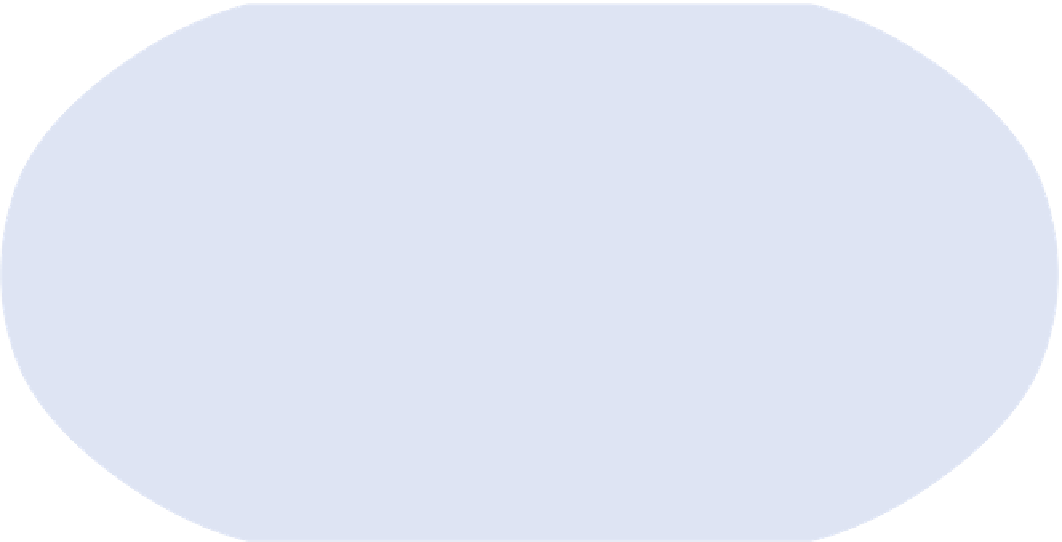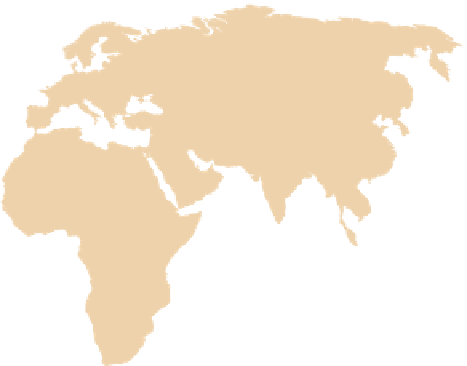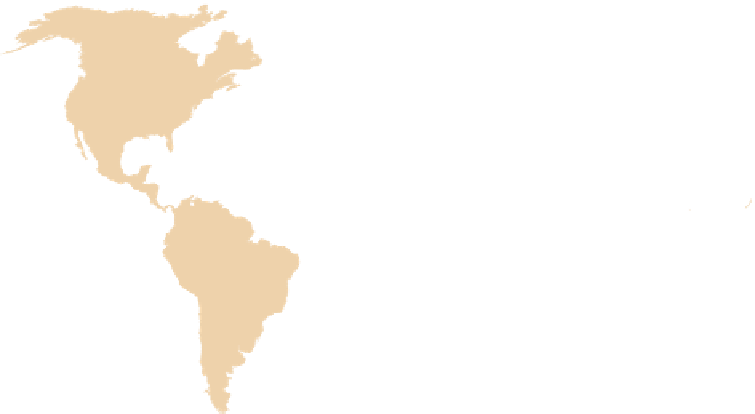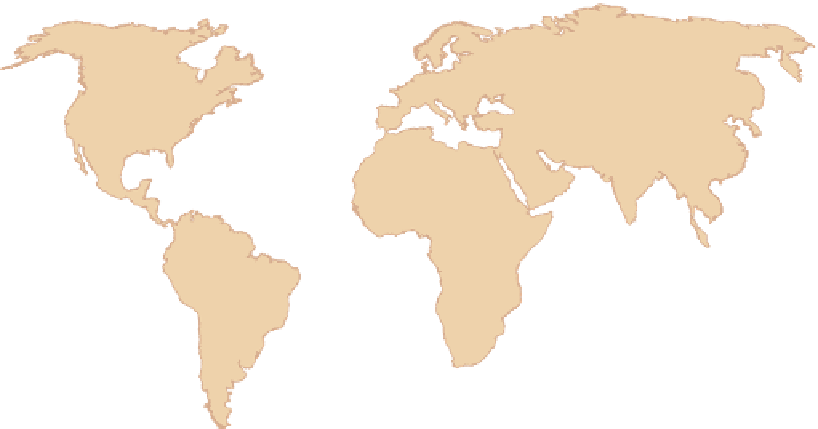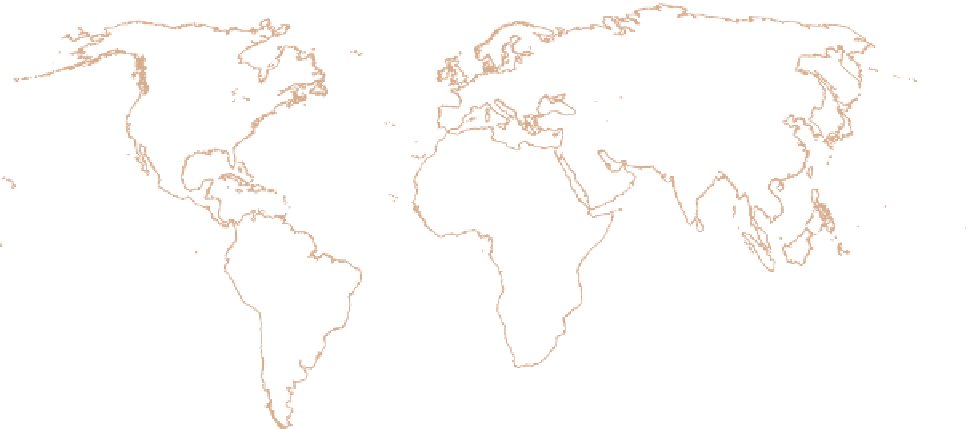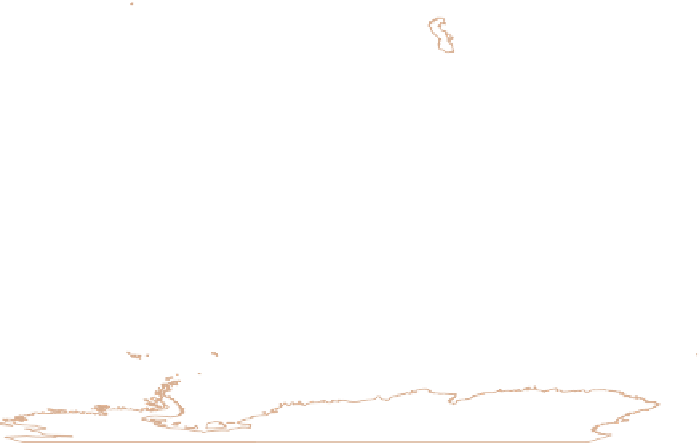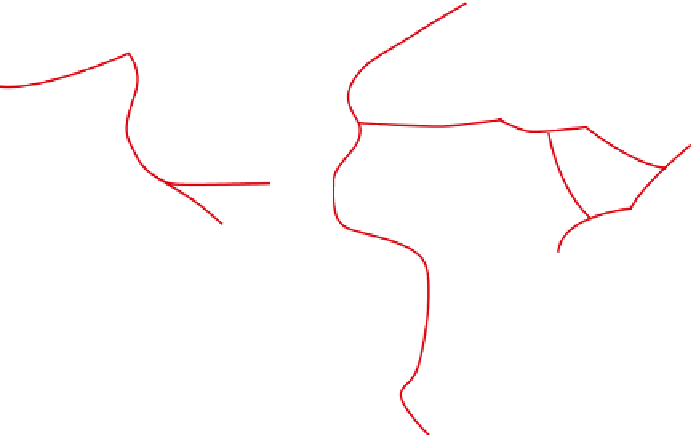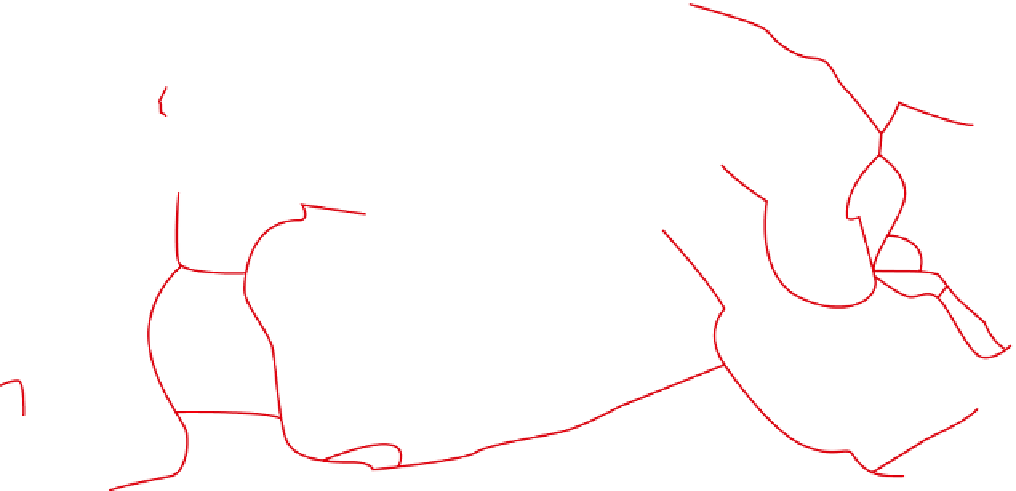Geoscience Reference
In-Depth Information
Plate Movement
The next obvious question is
why
does continental drift occur; how
is it possible that large landmasses move around Earth over time?
At a fundamental level, it happens because tectonic plates float on
the asthenosphere and are moved by convection loops driven by
geothermal
activity. Recall from Chapter 6 that convection occurs
in the atmosphere when solar energy heats the ground surface and
the warmed ground warms the overlying air. As the warm air rises,
the cool air sinks. The same loop of rising and sinking currents
also happens inside Earth. In contrast to atmospheric convection,
which is driven by an outside source (the Sun), convection within
Earth occurs because the radioactive decay of elements such
as uranium, deep within Earth, creates very high temperatures
between 1000°C and 2000°C (1800°F to 3600°F).
These high temperatures cause plumes of magma to rise
slowly by convection within the mantle and into the astheno-
sphere (Figure 13.3). As these magma plumes reach the base of
the crust, they spread horizontally and cool, moving segments
of the crust in the process. To visualize this movement, consider
a mechanized people mover in the floor of an airport terminal or
mall. This device works somewhat like a treadmill that continu-
ously loops around. If you stand on it where the tread rises out
of the floor, it carries you forward. The process of continental
drift works in somewhat the same way, with plates carried for-
ward by the moving magma beneath. Ultimately, the magma
slowly cools, solidifies, and sinks back into the mantle, where it
melts again. In this sense, a magma convection current is some-
what similar to a tropical Hadley cell in the atmosphere.
Earth
). He further argued that the continents had drifted apart since
that time in a process he called
continental drift
.
The reaction to Wegener's idea in the geologic community
was openly hostile, as it directly challenged the long-standing
notion that the continents had been connected by a variety of
land bridges at one time. In addition, his explanation for how
the continents moved, specifically that they “plowed” through
the denser oceanic crust, was physically impossible. As a result,
Wegener's ideas were largely ignored until the 1950s, when a
systematic study began of the ocean basins around the world.
At the same time, geologists began to investigate the cause of
earthquakes more closely. These combined studies demonstrat-
ed that the Earth's crust consists of a series of interconnected
plates (Figure 13.2) that indeed move relative to one another.
This new understanding was the foundation for the theory of
plate tectonics that emerged in the 1960s. This theory was revo-
lutionary because it accurately explained a great deal of volca-
nic and earthquake activity on Earth, as you will see later in this
chapter. It also validated Wegener's basic premise of continental
drift because it provided the mechanism for such migration. As
for Wegener himself, he never experienced personal vindication
for his ideas because he froze to death in 1930 on an expedition
to Greenland, some 30 to 40 years before his hypothesis was
accepted by the geological community.
Continental drift
The theory that the continents move relative
to one another in association with plate tectonics.
North
American
plate
Eurasian
plate
Juan de Fuca
plate
Caribbean
plate
Atlantic
Ocean
Arabian
plate
Philippine
plate
Caroline
plate
Indian
plate
Cocos
plate
African
plate
Pacific Ocean
South
American
plate
Pacific
plate
Nazca
plate
Indian
Ocean
Bismarck
plate
Fiji
plate
Australian plate
Scotia
plate
Antarctic plate
Figure 13.2 Geographic distribution of lithospheric plates.
The seven major plates (boldface type) cover 94% of Earth; about
a dozen smaller plates cover the remaining 6% of Earth. Notice the “jigsaw” appearance of the map and the way that the plates
move (arrows) relative to one another. (The boundary between the Indian and Australian plates is uncertain; many sources refer
instead to the “Indo-Australian” plate.)
